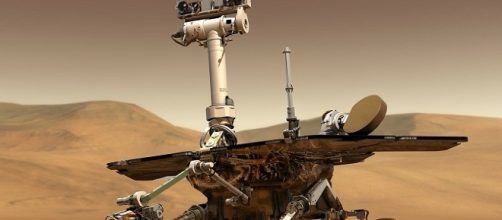The German Aerospace Centre is testing a new lunar rover at Mount Etna to see how this robotic machine can be further improved ahead of its future space missions.
The new lunar rover has been developed under the ROBEX (Robotic Exploration of Extreme Environments) project by a team of scientists from Germany, the United States, Italy, and the United Kingdom. The members of this team have spent several years designing the three-foot high and four-wheeled lunar rover that they hope will one day move across the slopes of the moon.
Mount Etna
Mount Etna, where the lunar rover is currently being tested, is Europe’s most active volcano.
It lies between the Italian cities of Catania and Messina on the island of Sicily. It is the largest Active Volcano in Europe, and its height keeps on changing from time to time due to summit eruptions. The volcano has a basal circumference of about 140 km. It remains in an almost constant state of activity and is visited by thousands of tourists every year. Considering its history of activity and population living nearby, Mount Etna has been designated a Decade Volcano status by the United Nations. In 2013, it was awarded UNESCO World Heritage status due to its educational and scientific value. The volcano regularly exhibits seismic activities, which scientists believe are similar to those exhibited on the moon.
Lunar rover testing
By testing the lunar rover at Mount Etna, scientists are actually simulating a future landing mission to the moon or to Mars, thinking this experience will be helpful. The team will also use the lunar rover to explore the depths of the volcano and get useful seismic data from this site. A series of equipment will be installed in this area to monitor seismic activity. The team says the rover’s initial testing phase has almost been completed on the Mount Etna’s Piano del Lago area – a desolate stretch of terrain that experiences strong winds.
German Aerospace Center
Headquartered in Cologne, the German Aerospace Center (in German, Deutschen Zentrums für Luft- und Raumfahrt/DLR) was established in 1969 as the national agency for aerospace, energy, and transportation research in Germany.
Today, the agency is engaged in a variety of research and development projects involving foreign partnerships. As the space agency of the country, DLR is responsible for planning and implementing the German space program on behalf of the federal government of the country.


